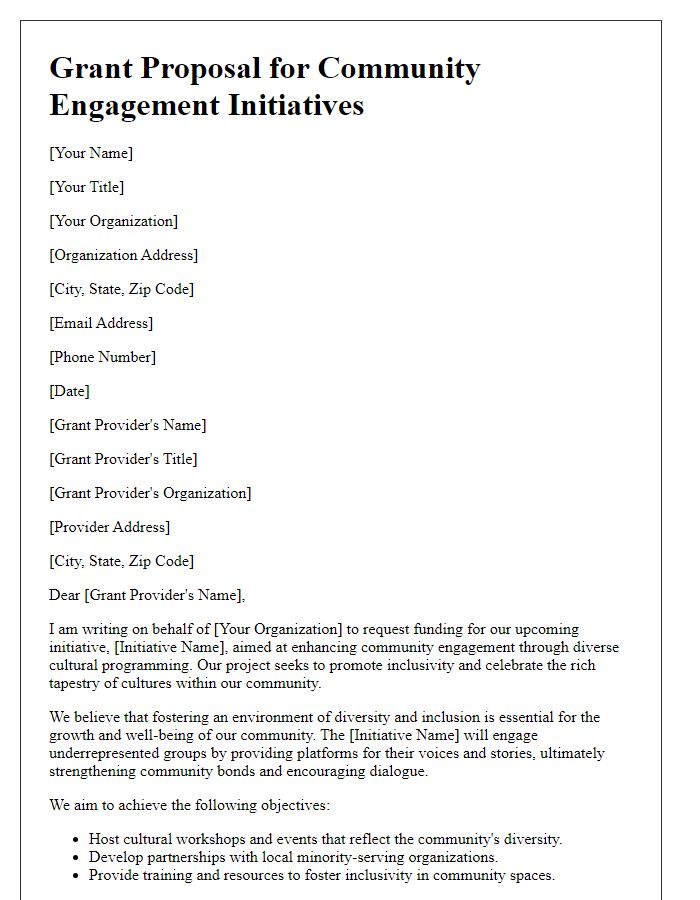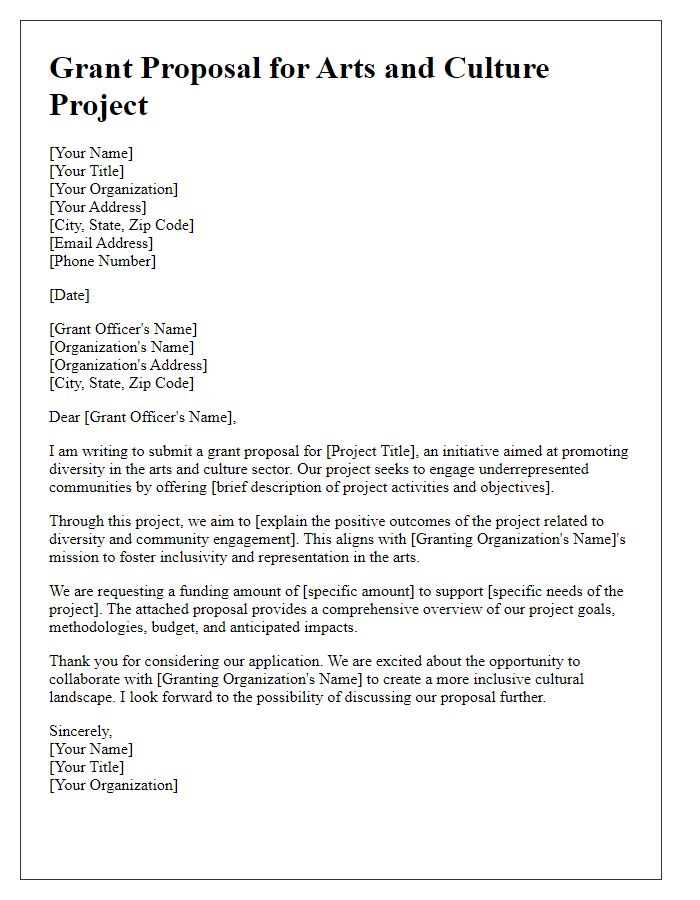Are you ready to make a meaningful impact in promoting diversity within your organization? Crafting a compelling letter for a diversity grant proposal can set the stage for transformative change and create opportunities that foster inclusivity. This process doesn't have to be daunting; with the right approach, you can effectively convey your organization's mission and the potential benefits of your initiatives. Join me as we explore essential elements of a successful letter template that will inspire action and supportâlet's dive in!

Introduction and Purpose
The Diversity Grant Proposal aims to promote inclusivity and representation within multiple spheres, including education, workforce, and community initiatives. This initiative seeks to bridge the gaps experienced by underrepresented groups, particularly in marginalized communities (those facing socioeconomic challenges, racial discrimination, or disability barriers). By securing funds, the proposal will facilitate programs that foster multicultural understanding (events that celebrate diverse cultures through workshops, festivals), mentorship opportunities for minority youth, and professional development targeted at increasing the number of diverse individuals in leadership positions across various industries. The overarching purpose focuses on creating a more equitable society that values the unique contributions of all individuals, ultimately enriching the collective experience within educational institutions, businesses, and local communities.
Diversity Statement
Diversity statements serve as essential documents that articulate an organization's commitment to promoting inclusive environments. They often highlight statistical data reflecting the representation of underrepresented groups across various domains, such as gender, race, and socioeconomic status. For instance, companies striving for greater gender diversity might aim for a 50/50 male-to-female ratio within leadership roles by 2025. Similarly, educational institutions may focus on increasing enrollment of students from low-income backgrounds by 15% over a three-year period. The importance of fostering a culturally responsive curriculum, as well as implementing mentorship programs for marginalized communities, can further enrich the narrative. Moreover, the impact of community engagement initiatives, partnerships with local organizations, and supportive policies shapes the overall framework of these proposals, creating pathways for sustainable inclusivity.
Objectives and Goals
The objectives and goals of the diversity grant proposal aim to promote inclusivity and equity within the community (defined as a specific geographic location or demographic group). The primary objective centers on increasing participation from underrepresented groups, particularly focusing on ethnic minorities and individuals with disabilities, in various programs and initiatives. This approach includes developing mentorship programs that connect youth from marginalized backgrounds with industry leaders, enhancing their professional development. Another critical goal involves creating accessible resources and workshops (scheduled events focusing on skill-building) to foster a supportive environment for all participants. These initiatives seek to dismantle systemic barriers while cultivating a culture of respect and understanding among diverse populations, ultimately leading to enriched community engagement and sustainable growth.
Impact and Benefits
Diversity grant proposals aim to enhance inclusivity and representation within organizations, communities, or educational institutions. These initiatives often lead to increased creativity and innovation by integrating varied perspectives from different backgrounds. Enhanced community engagement occurs through outreach programs that connect marginalized groups with resources and opportunities, fostering a sense of belonging. Economic benefits arise as diverse teams demonstrate improved performance, leading to higher revenue and productivity. Furthermore, programs focused on diversity build cultural competence, preparing individuals for a globalized workforce. The lasting impact includes building a more equitable society where all voices are valued and heard, ultimately benefiting both individuals and organizations.
Budget and Funding Request
A comprehensive budget for a diversity grant proposal requires meticulous planning and allocation of funds across various key components. Essential areas to consider include personnel costs for project coordinators, which may comprise salaries or stipends for a team dedicated to managing diversity initiatives. An estimated 30% of the total budget should be earmarked for training programs aimed at enhancing cultural competence and awareness among staff and participants. Additionally, allocate funds for outreach efforts, such as community engagement events in local neighborhoods, which can involve costs for venue rentals, promotional materials, and transportation. Another critical expense is the implementation of specific diversity programs, potentially involving collaboration with external consultants, whose fees can vary significantly depending on their expertise. Also, consider budget line items for evaluation and assessment tools necessary for measuring the impact of the diversity initiatives, which can range from surveys to analytics software. Overall, a detailed budget not only reinforces the project's feasibility but also demonstrates commitment to advancing diversity and inclusion within the targeted community.
Letter Template For Diversity Grant Proposal Samples
Letter template of diversity grant proposal for community engagement initiatives

Letter template of diversity grant proposal for cultural exchange projects

Letter template of diversity grant proposal for inclusive research initiatives

Letter template of diversity grant proposal for youth mentorship programs

Letter template of diversity grant proposal for arts and culture projects

Letter template of diversity grant proposal for health equity initiatives

Letter template of diversity grant proposal for environmental justice programs







Comments